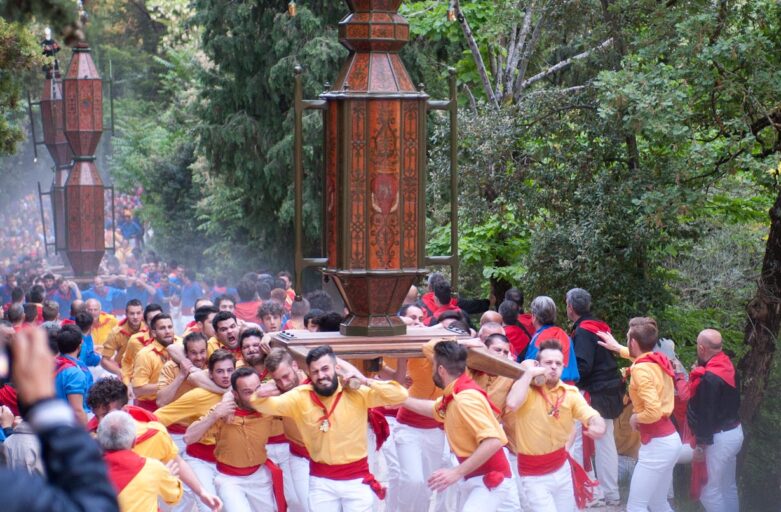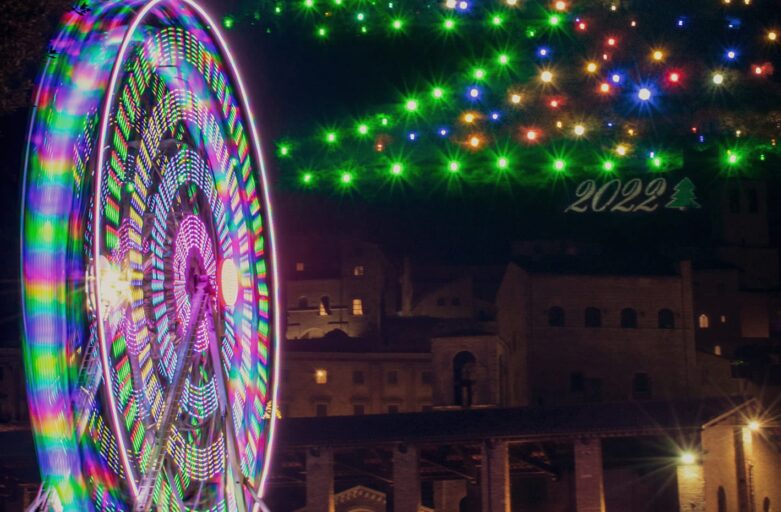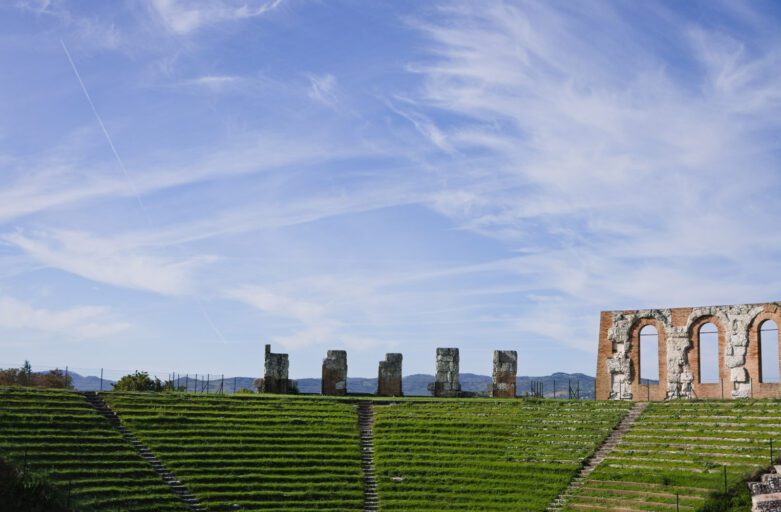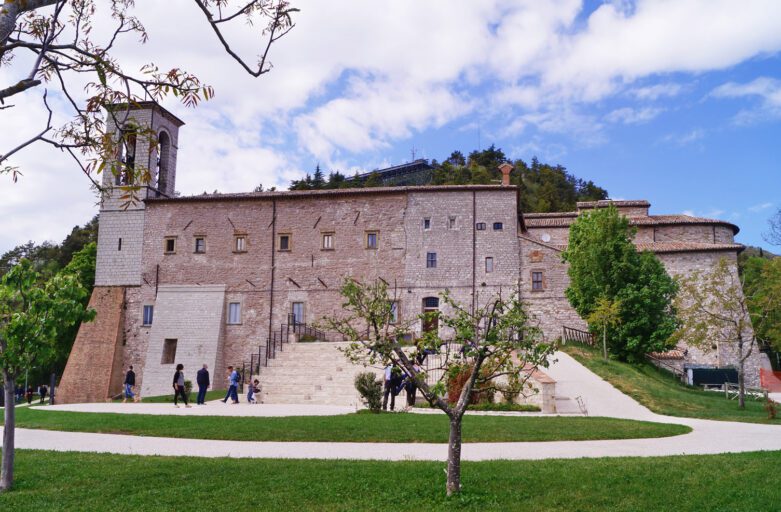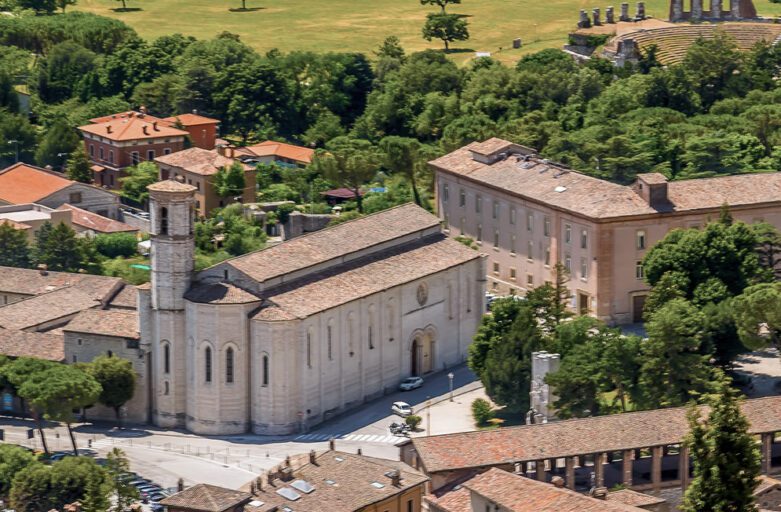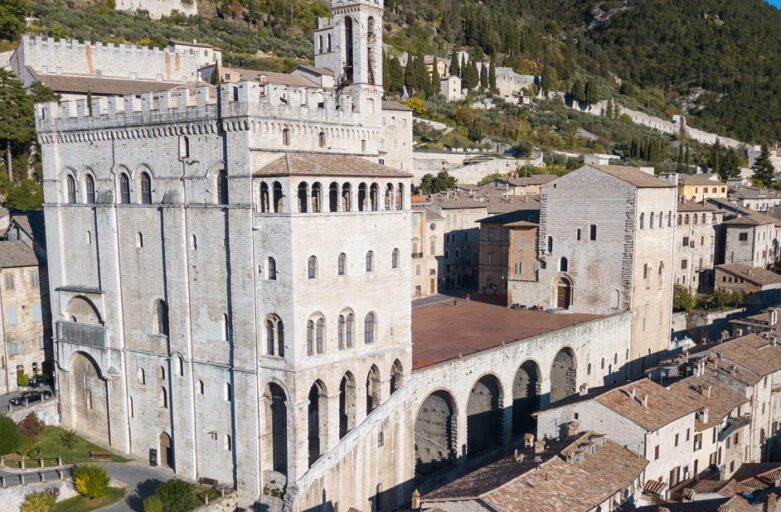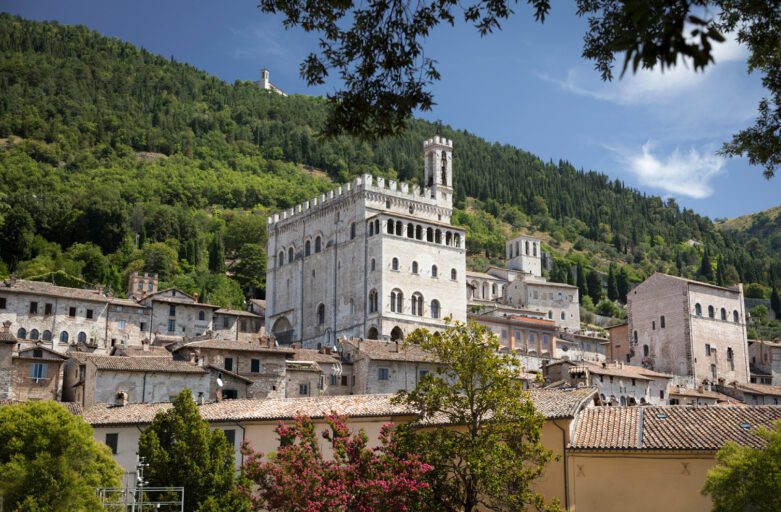The Festa dei Ceri (or Saint Ubaldo Day) is one of the oldest and most suggestive events that takes place every year on 15 May
Tag: Gubbio
The Christmas tree of Gubbio: the tree of the Guinness World Records
The biggest Christmas tree of the world is in Umbria, precisely in the Medieval city of Gubbio. Made for the first time in 1981, the
The Roman Theater in Gubbio
A Look at Our Ancestors
South of Gubbio’s Medieval quarters the Guastuglia Plain (pron. goo-ast-oo-Leah) lies, delimited west by the so-called vallum (military defense line), and east by a river called Camignano (pron. come-in-ya-know). From this area you can admire the Medieval town center, a little above, and the old buildings – the Palace of Consuls, first of all – that made the history of Gubbio.
Saint Ubaldo’s Basilica – Gubbio
A Brief Biography
The personage of young Ubaldo – who was officially declared a saint on March 5, 1192 – cannot be divided from Gubbio and the great love the town’s inhabitants still have for him. More than eight centuries later, in fact, its unique memory has not faded away: a sign of gratitude toward the Patron Saint for having been an inspirer of peace and reconciliation
Saint Francis’ Church in Gubbio
Francis, the Man; and Gubbio
The story of Gubbio and Francis of Assisi means the discovery of an intense relationship, interwoven with travels, friendship, and feelings. Francis’ father, Bernardone (“Big Bernard”), had frequent trades with Gubbio, often taken care of by Francis himself, who therefore happened more than once to get there for business. In Gubbio the wealthy Spada familiy, a.k.a. Spadalonga (respectively = sword, and long sword), active in the field of wool and fabrics, also “provided” Francis with the friendship of their young sons, with whom he would spend his days over there. One of them was among his comrades in arms in the 1202 war between Assisi and Perugia.
Piazza Grande (The Main Square)
A Decentralized Center
Gubbio rises at the foot of Mount Ingino with a strong self-consciousness. Framed within a luxuriant Nature, rich in woods and trails, it is considered one of the most beautiful Medieval towns in Italy. A major feature of the old town center are the buildings in calcareous stone, that gives them a typically gray color. Stones that still envelope the secrets of past masters and masterpieces while filling one’s eyes and soul with awe and wonder.
Palace of Consuls
A Giant in the Square
The Palace of Consuls (Palazzo dei Consoli), built in the years 1332-49, rises dramatically on the background of Piazza Grande, the Main Square. It is more than 60 meters (180 feet) high, including its originally shaped bell tower that still nowadays “calls” the citizens. In fact, thanks to teams of master bell ringers who activate the famous Campanone (Big Bell) by hand, the main civil and religious feast days enjoy a fascinating accompaniment.
To reach the palace gate you will go up a staircase built on a flying buttress and shaped like a fan, harmoniously opening on the square. The stone balcony used to be the most important place for the political organization of Gubbio. Here the leaders held their exhortations, or promulgated the decrees for the town’s governance.
The Ducal Palace
At the Court of the Duke of Urbino
The Ducal Palace was built by decision of Federico da Montefeltro in a town area called Corte Vecchia (the Old Court) – right in front of the wonderful Gothic Cathedral dedicated to Saint Mariano and Saint Giacomo, martyrs of the 13th and 14th centuries. The palace was the very first example of Renaissance architecture in Gubbio, which it still overlooks.
